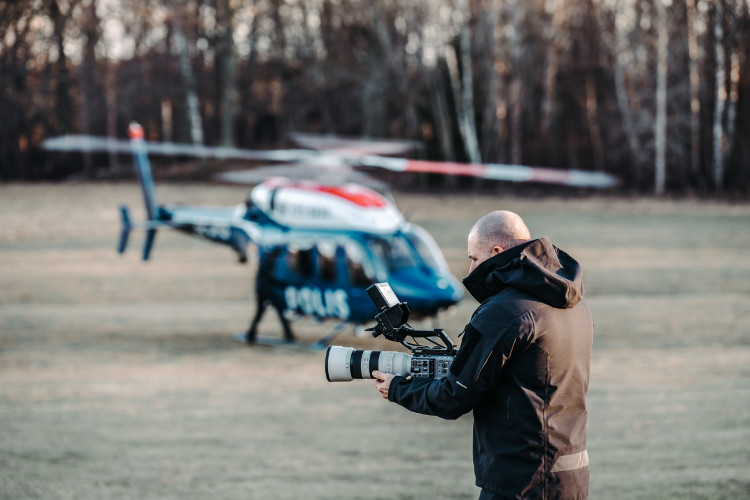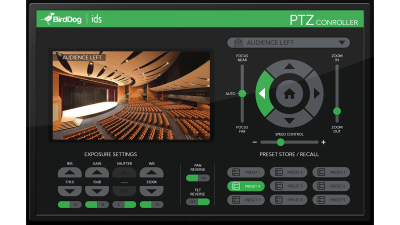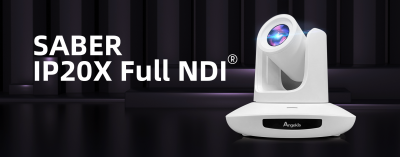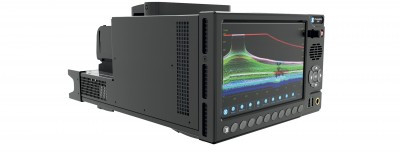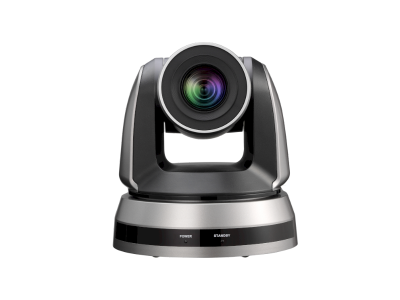Flexiscope from Hamlet
Author: Dennis Lennie
Published 1st September 2008
A number of years ago Hamlet gave itself the impossible task of developing the worlds first HD and SD video and audio measurement and monitoring instrument that could be packed into one small handheld device. The new instrument would need to provide waveforms, vectors, audio bar graphs, measurement cursors, a range of error detection, decoding of both embedded and AES/EBU audio with a selection of ballistics, audio standard display graticules and to include an external reference - these were prerequisites. At the outset this was thought to be an impossible task - but fortunately the talented engineers in our in-house design team were up to the challenge.
The enclosure needed to be solid and rugged, it needed to house the new electronics LCD panel speaker I/O ports and control panel. The unique design that we ended up with was one determined on the basis of user feedback Comfortable to hold in the hand, solid and capable of withstanding substantial shock. With mounting holes so they can be put on top of cameras it would prove to be the camera-man’s friend and the broadcast engineer’s companion.
One of the most difficult tasks was finding a suitable screen, high resolution but low power. The LCD screen used in the MicroFlex and FlexiScope are the same - the MicroFlex, it's a smaller boxier little brother of the FlexiScope.
From users in the field we had operational reports - this is one such one courtesy of Michael Brennan, Director of Photography: "I had my doubts about the Flexiscope. The hand held form factor isn't ideal for location use, I thought. It has been designed for engineers lurking around a broadcast facility. Its battery life would probably be minuscule and the screen was very small...
But it is significantly lighter, thus reducing shipping costs and cheaper than other battery powered waveforms and it was with these aspects that I decided to give it a try. Well, the longer I used the Flexiscope the more I began to like it.
Although the MicroFlex might be more versatile mounted on top of the camera, for the series of shoots I recently did, a documentary, aerial job and pop promo all without focus pullers, I wouldn't have bolted it to the camera anyway.
As one would expect from Hamlet, the Flexiscope does what it says on the box. It is a waveform and vectorscope with modular plug in options - I was using the multi standard/frame rate HD/SD option without the test signal generator function.
Its added features include an audio monitor and picture monitor. The audio monitor displays four channels in bar graph form and a mini jack enables stereo monitoring.
So for field use the Flexiscope is indeed versatile in that it can enable directors to monitor sound. Internal NiMH ( Nickel Metal Hydride) power the unit for around four hours; long enough for a days shoot if you are using it for checking exposure and occasional monitoring. Hamlet provided a Cannon 4-pin adapter so I could power the unit from a camera battery, but with careful use the internal batteries lasted all day.
The waveform vector display is fairly bright and easily viewable in sunlight. An alarm function uses an audible warning that is programmable among other things for illegal luminance values. The waveform display can be selected to bowtie and has horizontal time-base ranges of H, 2H parade and HMag. Eight sets of display settings can be memorised and recalled using the front panel buttons.
The unit comes with an installation CD for PCs. Error logs can be downloaded to a computer and software upgrades can also be uploaded.
A useful feature is 'Hands Free Timing' that automatically switches between internal and external syncs to easily identify timing errors.
The unit survived the rigours of century degree heat in the Israeli desert, where it became very useful indeed for setting exposure for crane shots. I can also testify that it works at an altitude of 500 feet below sea level!
Then in LA a helicopter shoot using a HD gyro camera the display was easy to see in the cockpit and simply plugged into the existing 'rat's nest' of cables and plugs and being self powered did not risk overloading the aircraft power supply.
The monitor I regularly use in the air includes a small in picture waveform built in. For quality work the in-picture waveforms leaves a lot to be desired, not least they obscure a portion of the image. But the resolution of the flexiscope is far superior, so a separate waveform is the smart solution.
Back in London a HD pop video included quite a few 'freestyle' steadicam shots. It was a breeze to replay and check the steadicam shots from the camera, monitoring framing and focus on a CRT and have full confidence in exposure by referring to the Flexiscope. If the steadicam operator wants to remove the viewfinder to help with weight and balance then the Flexiscope is a time saver as it is handy enough to quickly plug into a camera for a quick check.
A carry case with strap and pouches for options is a handy option to go for keeping everything safe and sound.
I am very impressed that it survived the knocks and abuse of airline travel and location shooting and is one of the few pieces of HD kit that I have strapped myself into that has worked straight out of the box!
The hand held form factor became less of an issue the more I used it. If the squarer MicroFlex might be somewhat more versatile due to its size for some people - it may be less for others.\"
With feedback like this, we were very pleased to find we had pretty much hit the spot with regards to the initial brief. The worlds first hand held portable HD/SD combined waveform, vector and audio measurement and monitoring instrument.




